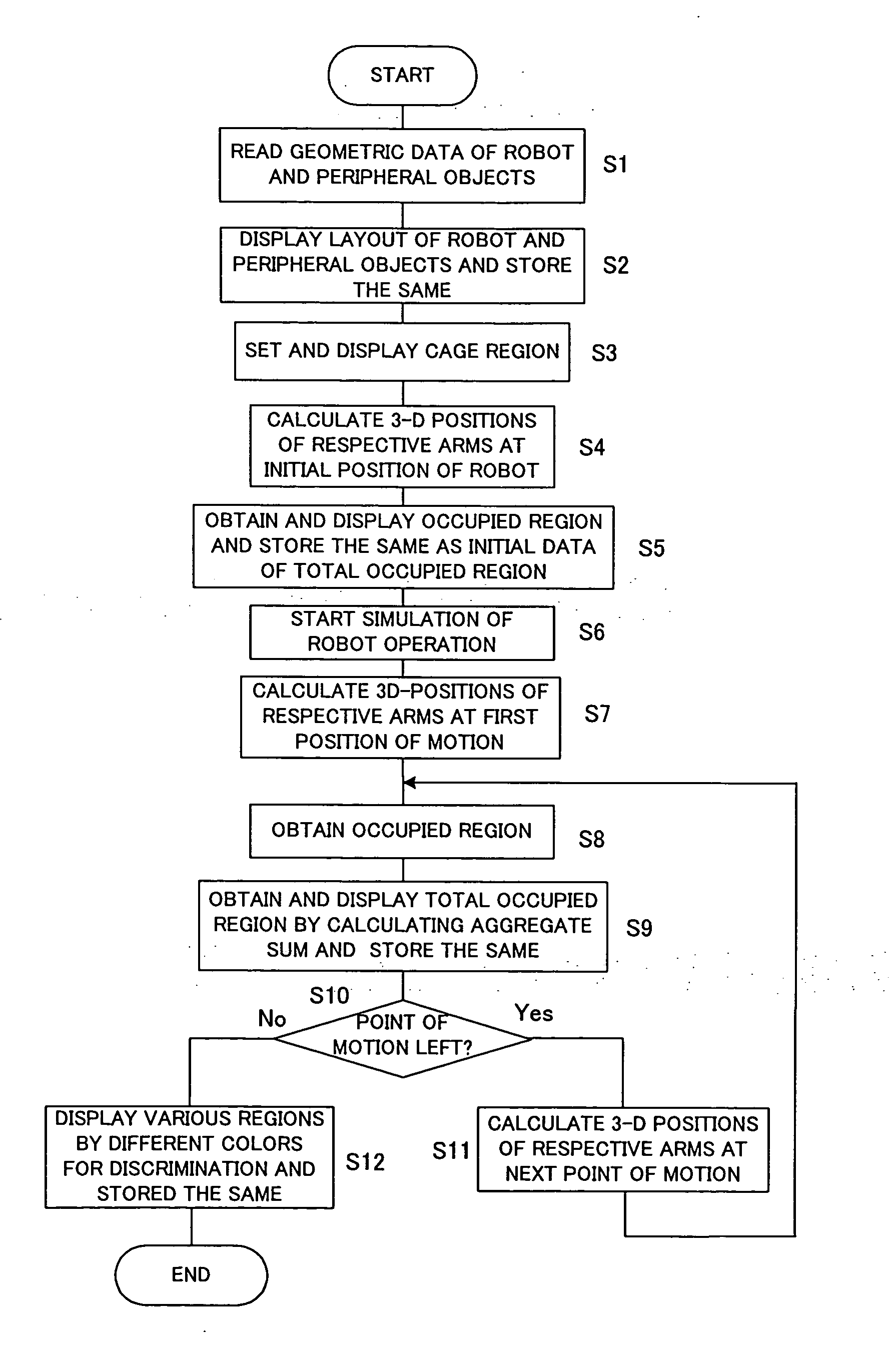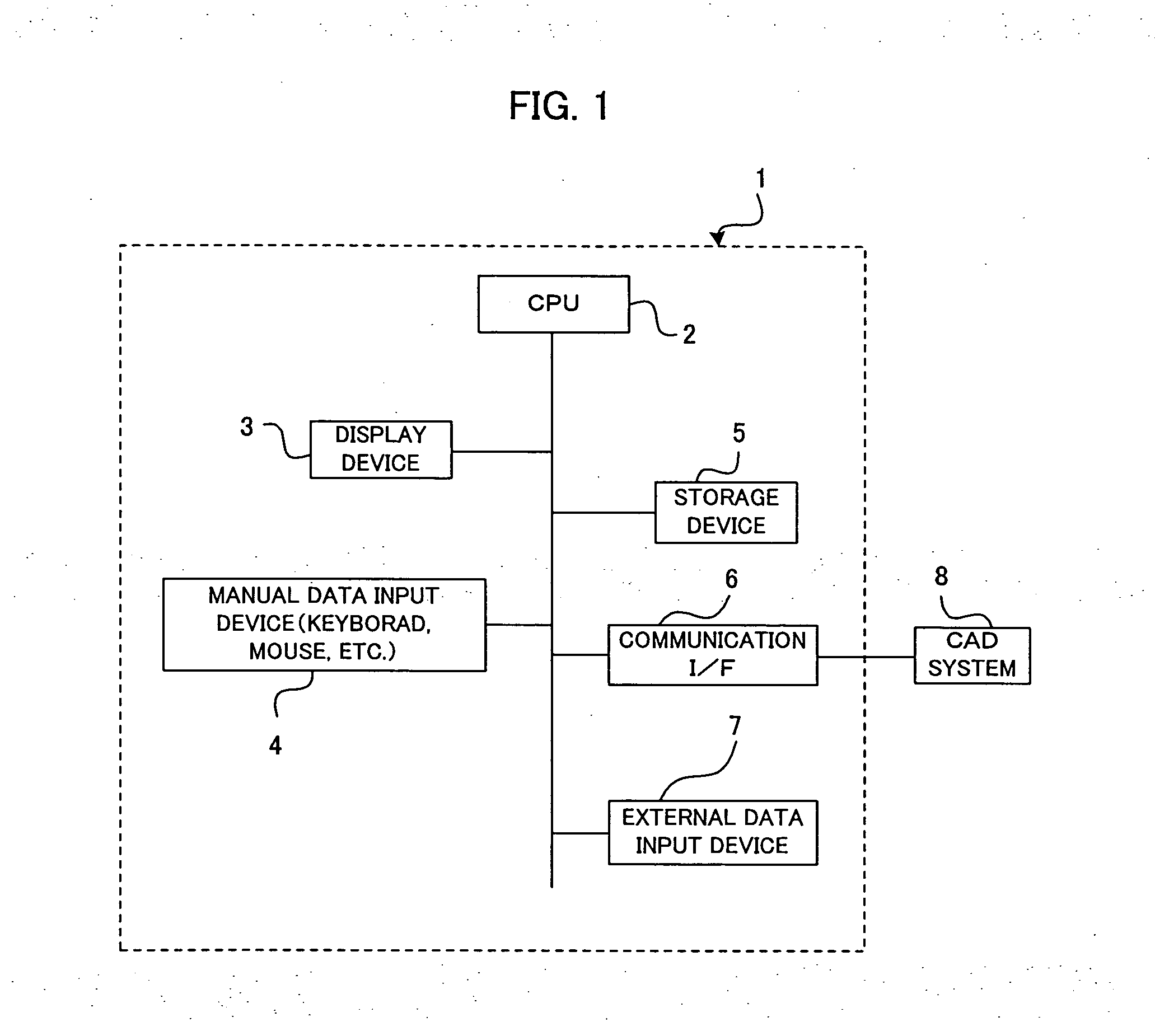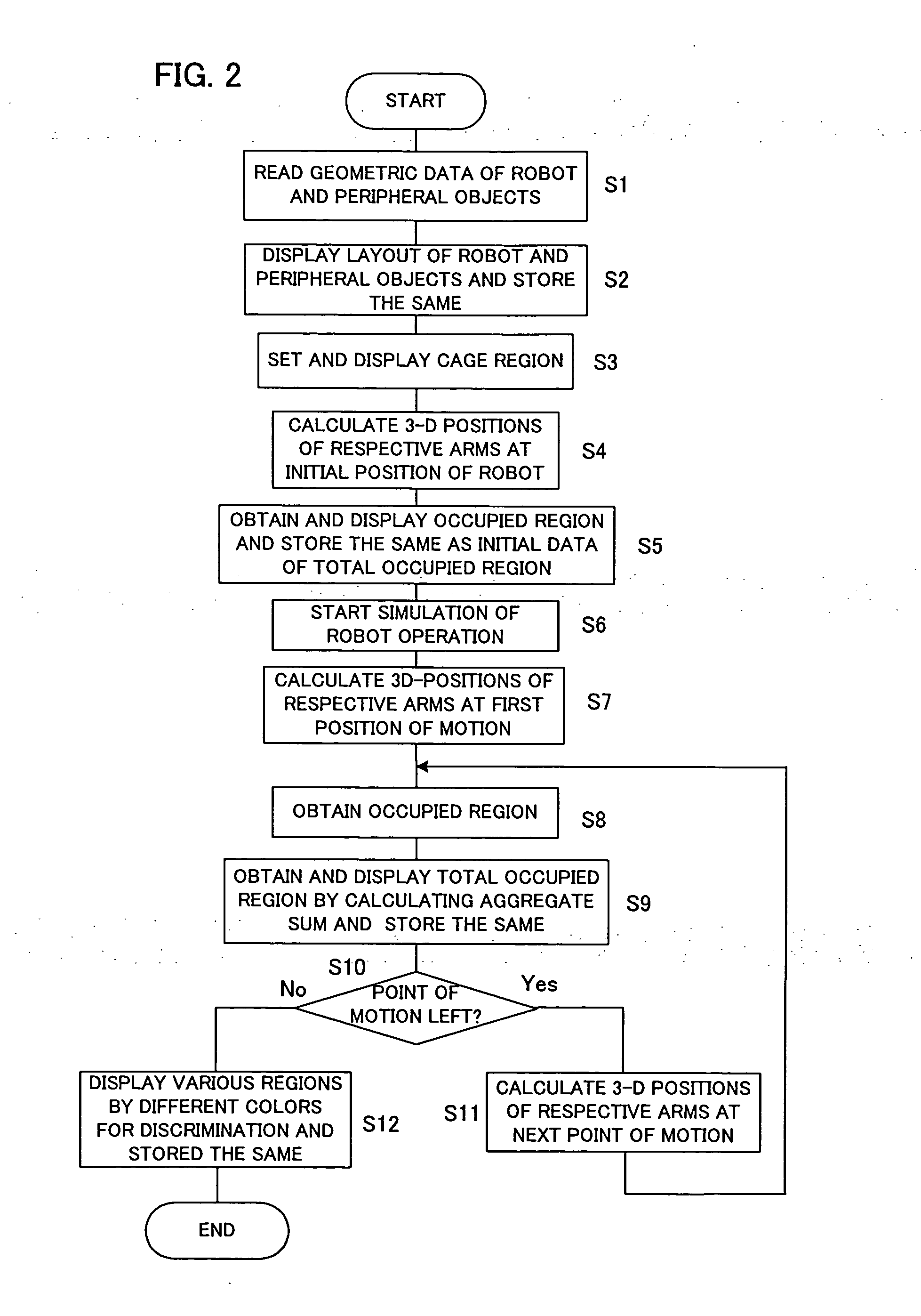Device for determining interference region of robot
a robot and interference technology, applied in the field of robot interference detection devices, can solve the problems of operator hitch in work, safety fences and the like in the workplace, waste of time and energy to relocate, etc., and achieve the effect of convenient procedure and easy determination
- Summary
- Abstract
- Description
- Claims
- Application Information
AI Technical Summary
Benefits of technology
Problems solved by technology
Method used
Image
Examples
Embodiment Construction
[0024]FIG. 1 is a block diagram showing a system configuration including a device for determining an interference region of a robot according to the present embodiment. In FIG. 1, a device 1 for determing an interference region of a robot comprises a CPU 2, a display device 3 connected to a bus line of the CPU 2, a manual data input device 4, a storage device 5, a communication interface 6 and an external data input device 7. A reference character 8 represents a CAD system connected to the device 1 for determining an interference region of a robot through the communication interface 6. It is possible to read three-dimensional geometric data (including dimensional data) of the robot which is a simulation target, three-dimensional geometric data (including dimensional data) in a state where the robot is equipped with an end effector (such as tool), three-dimensional geometric data (including dimensional data) of peripheral objects (such a jig and a safety fence), and the like, from th...
PUM
 Login to View More
Login to View More Abstract
Description
Claims
Application Information
 Login to View More
Login to View More - R&D
- Intellectual Property
- Life Sciences
- Materials
- Tech Scout
- Unparalleled Data Quality
- Higher Quality Content
- 60% Fewer Hallucinations
Browse by: Latest US Patents, China's latest patents, Technical Efficacy Thesaurus, Application Domain, Technology Topic, Popular Technical Reports.
© 2025 PatSnap. All rights reserved.Legal|Privacy policy|Modern Slavery Act Transparency Statement|Sitemap|About US| Contact US: help@patsnap.com



